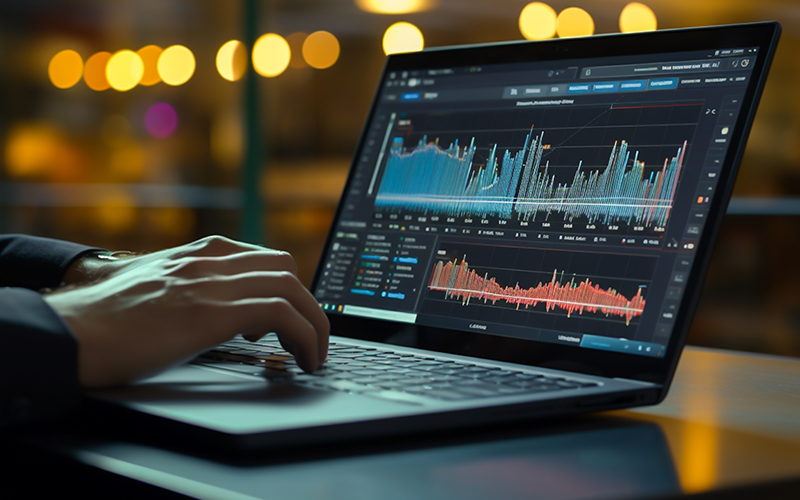Think back to the last time you lost yourself in something - whether a book, movie, or digital experience. An experience so vivid, so deep, that you were one with the protagonist, diving into the depths of the sea or soaring into the azure of the sky with them. Think back to that experience, and recall the details. Do you - recall the details, that is? You probably can! That is the power of immersive storytelling, where the reader or viewer is engaged in a state of ‘flow’ with the story.
Now think of bringing that experience to a classroom. A hazmat training class where you literally have to walk through hanging girders in a burning factory to exit the building. A safety drill where you buckle up to experience what it means to simulate a flight crash. Or even an immersive experience in an exotic foreign destination, using Duolingo and sign language to get your point across via language training.
Virtual reality (VR) makes all of these scenarios not just probable, but possible, in the here and now! The power of immersive learning experiences has been brought to vivid life via VR headsets and allied technologies.
What is Virtual Reality?
Virtual reality is a computer-generated experience of realism, including video, audio and other sensations and simulations, that provide the viewer an immersive experience. This alternate reality is made possible by hardware such as head mounted displays (headsets, helmets or goggles), gloves and other connected equipment worn by the user; as well as software such as a pose tracking system that precisely tracks the position of the head mounted display, controllers or other body parts within a defined Euclidean space. The headsets provide a 3D near-eye display that use techniques such as stereopsis to provide the effect of depth or the 3rd dimension to the user.
With a combination of these technologies and hardware, VR creators create alternative worlds that can provide a near-realistic immersive experience to users. VR is used more in entertainment, but its application in education and communication, such as VR meetings, is being increasingly explored. The immersive nature of the experience can vary depending on the equipment use and design. From a relatively non-immersive computer screen to a massively immersive VR room, a range of experiences may be created for users.
How is VR being used in crafting learning experiences?
When it comes to education, particularly for situations such as simulations and hazmat training where some scenarios are difficult to recreate without technology, VR can be hugely beneficial.
- Think of simulators that help pilots train on costly aircraft, or safety personnel who need to train to combat fires, floods and other disasters.
- VR can also benefit architects and planners who design buildings and spaces to accommodate all the needs of their customers. While walking through 3D simulations of their designs, they can work out the kinks and finesse their design.
- Avatar-based VR experiences allow users to don avatars of characters and traverse not just alternate realities, but to do it donning other personalities. Experiments in avatar-based virtual classrooms during the COVID pandemic showed that “...enabling in-class interaction with peer learners in VR classrooms enhances immersion in the learning environment and their identification of peer avatars, as well as helping learners to develop a stronger co-presence and more intimate perception of peers.”
Beyond VR, AR (augmented reality) or mixed reality settings, XR (extended reality) is emerging as a catch-all umbrella term that combines exciting advances in AI and 5G connectivity with intelligent on-device head, hand and eye tracking technologies, and the sleekest XR glasses and illumination to add elements of fantasy to plain old reality. Recent advances such as the Metaverse and Apple’s VisionPro have been made possible by these technologies.
Immersive VR for the win
Although it is not a reality yet in the sophisticated glory its makers envisioned, the Metaverse is a persistent spatial internet that provides personalised digital experiences to combine the physical and digital (phygital) as well as virtual worlds for the user. This advancement in technology can transform the classroom of the near-future - providing a hybrid learning experience where a group of learners, and their teacher, cohabit an enhanced reality and learn together.
- Think of the Google Expeditions app, created for teachers to use with their classes. The app features hundreds of adventures to choose from across history, science, the arts as well as the natural world. Using the app, learners can, for instance, go on an immersive simulated experience all the way atop Mount Everest, or to the Louvre.
- Learning a musical instrument has never been as immersive as it is with the PianoVision app (with the MetaQuest gaming headset) that employs AR/VR to help learners master playing the piano. Graphics are projected directly onto the piano keys, showing learners where to place their fingers, and play on the virtual piano keyboard!
- The Roblox Metaverse application offers millions of scenarios ranging from physics experiments to historical events. Students and teachers can login from anywhere in the world and select the experience they want to learn from, making hybrid virtual classrooms a startling reality.
- Think engineering drawings that explode into vivid life, allowing engineering and machine design trainees to go inside machines.
- British Petroleum partnered with Igloo Vision to create a VR experience of their plant in Hull, England to practise critical safety tasks.
VR for teachers
When learning experiences are immersive, learning becomes sticky. Engaging learning and engaged learners ensure superior learning outcomes. The teacher or trainer’s job is all that much easier with VR technologies. Immersive teaching takes on a whole new meaning using such aids, as the teacher co-experiences the virtual reality with the students. Teacher-student interactions in virtual classrooms can be part of the memorable experience.
Welcome to the new reality of immersive learning, circa 2024!
How can Infosys BPM help?
Infosys BPM’s learning and development outsourcing services can help your organisation craft stunning virtual reality experiences for safety training, design walkthroughs, vehicle simulations and much more. We assist businesses build immersive experiences that enable superior learning outcomes for your organisational training needs.








